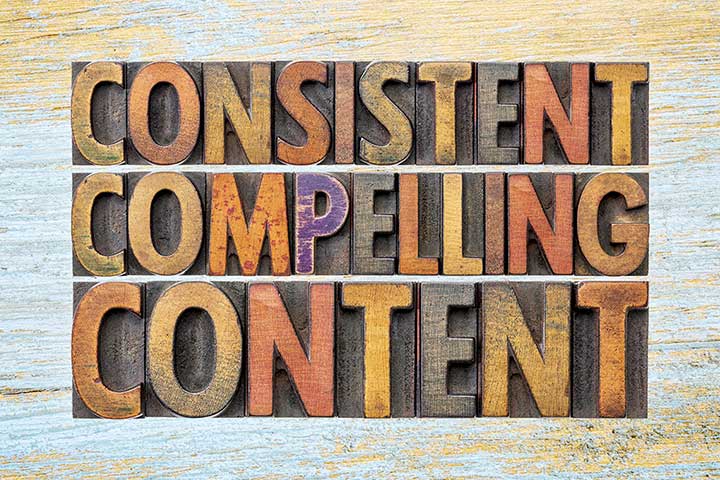What was the last big purchase that you made?
Have a think for a second. Was it an impulse decision, or did you do a bit of research first? Before moving to your home, did you look around the area, view the property, check out the local schools, or did you blindly sign on the dotted line with little consideration? I would safely argue that you did a bit of fact-checking before you made your decision, and if you did, then your customers are too.
It is estimated that you need between 5 and 20 touchpoints (depending on the industry) before considering buying from or using a company. That’s 5-20 videos, blogs, e-books that are read or absorbed, radio adverts, out-of-home media, magazine articles, etc, before they consider purchasing your product. Essentially, they want to get to know you before they commit, which is very reasonable. Ensuring that you have an armoury of excellent content means that you are in a prime position to seal the deal and begin to convert leads from customers.
Note the words ‘excellent content’. This doesn’t mean haphazard Facebook and Twitter posts. A well-constructed digital marketing strategy will take into account the needs of the reader, your potential clients, and it will be tailored to fit every step of the buying process.
Step 1: Awareness
Awareness is when your buyer identifies a problem that needs to be solved.
“My vacuum doesn’t seem to be picking up cat hair”
“I need to get in shape for my holiday in 4 months”
“Why aren’t my business’ Facebook posts generating sales?”
Writing blogs directly related to the pain points that your potential client may have, with the correct keywords, means that you have a selection of Googleable content that answers their problem. By researching what your competitors are writing and looking at regularly researching keywords, you can generate content based on searcher intentions.
A word of warning: just because you are creating content based on Google search algorithms criteria doesn’t mean that you are creating content for Google. You are writing for your reader, a human, not for an algorithm.
By providing a potential online solution to a problem, you place your business into the reader’s awareness, meaning that the next time they see your name, a lightbulb will turn on.
Step 2: Consideration
Ok, your buyer has worked out that in order to get in shape for their holiday, they probably need to go to a gym or get a personal trainer, and they need to buy a new vacuum cleaner, preferably bagless and designed with the pet owner in mind.
At this point, they’ve decided to solve their problem, so they will research the best possible solution.
One way of pulling them in is to create a selection of high-quality gated content. This could be eBooks, explainers or videos that address one particular pain point. For example, an eBook on healthy eating or an explainer video on the best new vacuums on the market gives the customer the understanding that you can fix the problem and that you are an expert in your field.
Gated content also allows you to funnel the consumer into a particular section of your site specifically aimed at resolving their problem and enables you to potentially contact them to follow up on what they have seen or read.
This content needs to be beautiful and memorable. It also needs to be informative.
The same can be said about videos. During the Beast from the East snowstorms, one plumber in Kent received over 65,000 views of a video that he created about boilers freezing up. His business received calls from all over the UK requesting assistance. The video was simple, understandable and solved a problem; it wasn’t boosted and had no paid-for advertising connected to it. What it did do was address a situation and help to resolve a problem. It was shareable and memorable, and as a result, the boiler servicing section of his business expanded.
Step 3: Decision
You’ve done it. Someone has chosen your solution over all the others in the marketplace. Fantastic! It still needs to be followed up on, though. They’ve chosen the perfect vacuum cleaner; now you have to encourage them to tell others about it. Whether that is through positive reviews or encouraging them to share your insightful and engaging videos, you need to bring on the ‘word of mouth’ effect ready for the next Googler at Step 1 of the process.
An informed and well-planned digital marketing strategy allows you to begin to decide what content you require and where your target audience will see it. If done well, you will undoubtedly reap rewards; if done badly, it can backfire. That is why it’s vital that you seek professional advice.
Now, on to Step 2.
If you would like any advice on your digital marketing strategy, please get in touch! You may also be interested in our blog, ‘The A-Z of Attractive and engaging content.’






